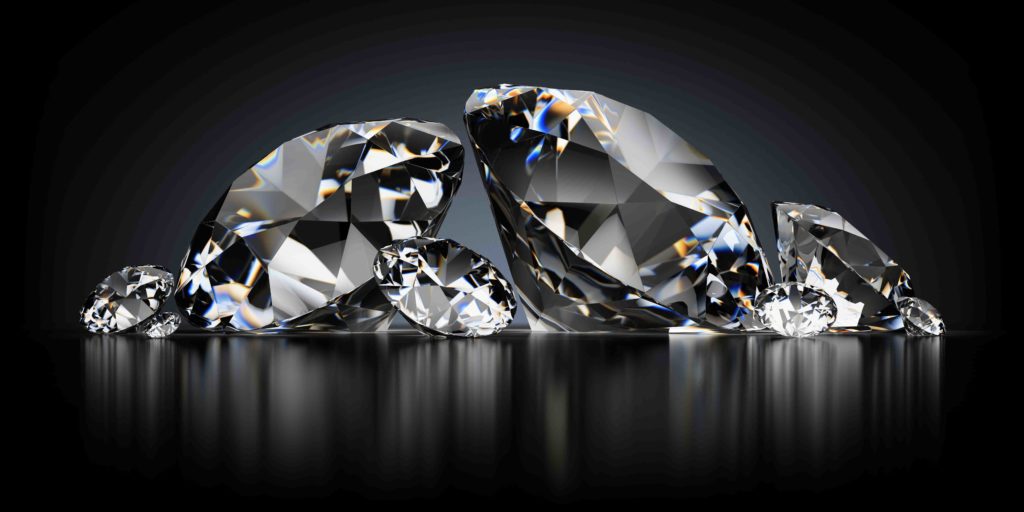The allure of diamonds has captivated humanity for centuries, symbolizing love, commitment, and luxury. However, a quiet revolution is underway in the diamond industry, led by the emergence of lab grown diamonds through the Chemical Vapor Deposition (CVD) process.
Introduction to Lab Grown Diamonds
What are lab grown diamonds? Lab grown diamonds, also known as synthetic or cultured diamonds, are diamonds produced in controlled laboratory environments rather than being mined from the earth. They possess the same chemical composition, physical properties, and optical characteristics as natural diamonds.
How are they made? The process of creating lab grown diamonds involves replicating the natural conditions under which diamonds form deep within the Earth’s crust. One of the most common methods used is Chemical Vapor Deposition (CVD), which mimics the conditions found in the mantle where diamonds are naturally formed.
CVD Process Explained
Understanding Chemical Vapor Deposition (CVD): CVD is a method of diamond synthesis that involves the deposition of carbon atoms onto a substrate in a controlled environment. This process occurs at relatively low pressures and temperatures, making it suitable for industrial-scale production of high-quality diamonds.
Steps involved in CVD diamond growth: The CVD process begins with a diamond seed, which is placed in a chamber containing a carbon-rich gas such as methane. When the gas is heated, it breaks down into its constituent elements, and carbon atoms are deposited onto the diamond seed, gradually building up layers of diamond material.
Advantages of Lab Grown Diamonds
Environmental benefits: Unlike traditional diamond mining, Lab grown diamonds cvd, which can have a significant environmental impact, lab grown diamonds are produced in a sustainable manner with minimal ecological footprint.
Ethical considerations: Lab grown diamonds are free from the ethical concerns associated with diamond mining, such as labor exploitation and environmental degradation.
Cost-effectiveness: In addition to being more environmentally friendly and ethically sound, lab grown diamonds are often more affordable than their natural counterparts, making them accessible to a wider range of consumers.
Quality and Characteristics
Comparing lab grown and natural diamonds: Lab grown diamonds exhibit the same optical and physical properties as natural diamonds, including hardness, brilliance, and fire. They are virtually indistinguishable from natural diamonds to the naked eye.
Purity levels and clarity: Lab grown diamonds can achieve higher levels of purity and clarity than natural diamonds, as they are grown under controlled conditions without the impurities commonly found in mined diamonds.
Uses and Applications
Jewelry industry: Lab grown diamonds are gaining popularity in the jewelry industry, with leading designers and retailers embracing them as a sustainable and ethical alternative to mined diamonds.
Industrial applications: Beyond jewelry, lab grown diamonds have a wide range of industrial applications, including use in cutting tools, electronics, and scientific research.
Market Trends
Growth of lab grown diamond market: The market for lab grown diamonds has experienced exponential growth in recent years, driven by increasing consumer demand for sustainable and ethically sourced products.
Consumer preferences: As awareness of the environmental and ethical issues surrounding traditional diamond mining grows, consumers are increasingly choosing lab grown diamonds for their engagement rings and other jewelry pieces.
Misconceptions Debunked
Addressing common myths: Despite their many advantages, lab grown diamonds still face misconceptions and skepticism from some consumers. Common myths include concerns about quality, durability, and resale value.
Dispelling doubts about quality: Numerous studies and tests have demonstrated that lab grown diamonds are of comparable quality to natural diamonds, with some experts even suggesting that they may surpass natural diamonds in certain aspects.
Sustainability and Eco-Friendliness
Reduced environmental impact: By eliminating the need for diamond mining, lab grown diamonds help to reduce the environmental destruction caused by traditional mining practices, including habitat destruction, soil erosion, and water pollution.
Responsible sourcing: Many consumers are drawn to lab grown diamonds because of their transparent and ethical supply chain, which ensures that the diamonds are produced in an environmentally responsible manner and that workers are treated fairly.
Cultural Acceptance
Changing perceptions towards lab grown diamonds: As lab grown diamonds become more mainstream, cultural attitudes towards them are shifting, with many people viewing them as a viable alternative to natural diamonds rather than inferior imitations.
Social implications: The growing acceptance of lab grown diamonds reflects broader societal trends towards sustainability, ethical consumption, and responsible stewardship of natural resources.
Future Outlook
Innovations in diamond production: Advances in technology are continuously improving the efficiency and scalability of lab grown diamond production, paving the way for even greater adoption and acceptance of these diamonds in the future.
Market predictions: Industry experts predict that the market for lab grown diamonds will continue to expand rapidly in the coming years, driven by increasing consumer awareness and demand for sustainable and ethically sourced products.
Case Studies
Success stories in the lab grown diamond industry: There are numerous success stories of companies that have embraced lab grown diamonds and achieved commercial success by offering high-quality, ethically sourced diamonds to consumers.
Consumer Guide
Tips for purchasing lab grown diamonds: When purchasing lab grown diamonds, it’s essential to look for reputable retailers and manufacturers who adhere to strict quality standards and ethical sourcing practices.
What to look for when buying: Consider factors such as cut, color, clarity, and carat weight when selecting a lab grown diamond, just as you would with a natural diamond.
Regulations and Standards
Compliance with industry standards: Lab grown diamond manufacturers are subject to the same industry standards and regulations as natural diamond producers, ensuring that their diamonds meet the highest quality and ethical standards.

